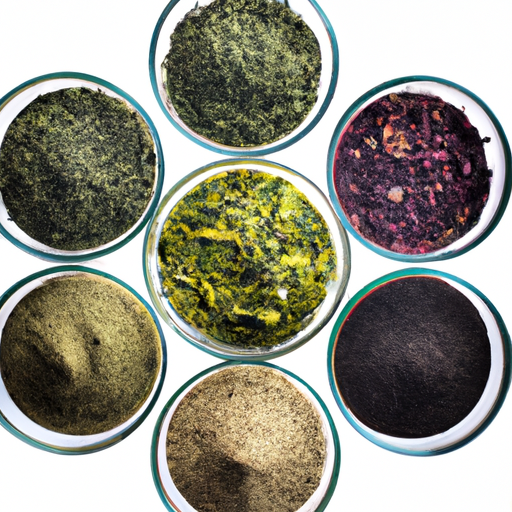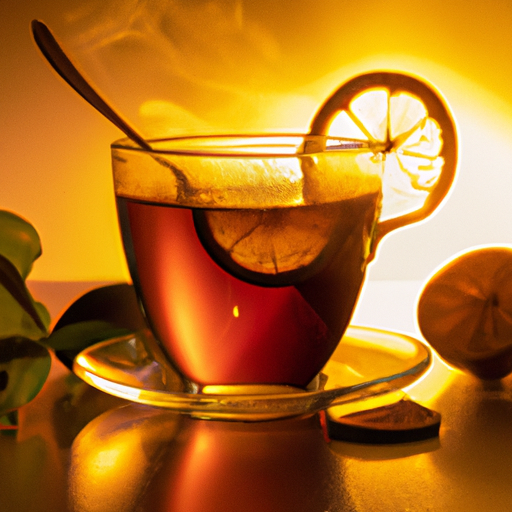Did you know that there are six primary categories of tea, all originating from the leaves of the Camellia Sinensis plant? This opens up a vast array of flavors and scents for tea lovers to discover.
From the vibrant green tea with its light flavor to the unique yellow tea with its distinct hue, each type of tea offers a different experience. Whether it’s the sweet and subtle taste of white tea, the complex flavors of oolong tea, or the deep richness of black tea, there is something for everyone to enjoy.
And let’s not forget about pu-erh tea, an aromatic black tea that undergoes double fermentation and compression. The taste of tea is also influenced by the region and climate where it’s grown, known as terroir.
In addition to the true teas, there are also herbal teas and flavored teas made from various ingredients.
Join me on a fascinating journey as we delve into the ultimate guide to different types of tea.
Key Takeaways
- There are six main categories of tea: green, yellow, white, oolong, black, and pu-erh.
- Different types of tea have different levels of oxidation, which affects their flavor.
- Herbal teas are not considered true teas and are called tisanes.
- Flavored teas can be made from the Camellia Sinensis plant, herbs, or fruits.
What is it?
I know that there are six main categories of tea, including green, yellow, white, oolong, black, and pu-erh, and herbal teas are considered tisanes and not true teas.
Tea is not just a beverage, it’s an experience. There are different ways to enjoy tea, whether it’s sipping a cup in the morning to start the day or hosting a tea party with friends.
Tea has a rich cultural significance in many countries, from the traditional tea ceremonies in Japan to the elaborate tea houses in China.
Each type of tea has its own unique flavor profile and characteristics. Green tea is refreshing and light, while black tea is bold and robust. Oolong tea offers a complex taste, and pu-erh tea has a distinct earthy aroma. White tea is delicate and subtle, and yellow tea has a gentle sweetness.
Exploring the world of tea is like embarking on a journey of flavors and traditions.
Categories and Varieties
Exploring the world of tea reveals a myriad of categories and varieties that offer a diverse range of flavors and aromas. From the delicate sweetness of white tea to the robust richness of black tea, each type has its own unique characteristics. Additionally, the health benefits associated with different types of tea make them even more enticing. Green tea, for example, is known for its antioxidant properties and potential weight loss benefits, while herbal teas often contain medicinal properties that can aid in digestion or promote relaxation. Moreover, tea rituals and traditions from around the world add a fascinating cultural aspect to the enjoyment of tea. From the intricate Japanese tea ceremonies to the warm and comforting masala chai of India, these rituals highlight the significance and reverence that tea holds in various cultures. So, whether you are seeking a refreshing beverage or a moment of tranquility, the world of tea has something to offer for everyone.
| Category | Main Varieties | Health Benefits |
|---|---|---|
| Green Tea | Matcha, Sencha | Antioxidants, Weight Loss |
| Black Tea | Earl Grey, | Heart Health, Mental Alertness |
| Darjeeling | ||
| White Tea | Silver Needle | Skin Health, Immune Boost |
| Herbal Tea | Chamomile, | Relaxation, Digestive Aid |
| Peppermint |
Tea Processing
Tea processing involves a series of steps that transform the leaves of the Camellia Sinensis plant into the various types of tea we enjoy. The techniques used in processing greatly impact the flavor and quality of the final product.
Here are four key aspects of tea processing that contribute to the diverse range of tea flavors:
-
Oxidation: The level of oxidation determines whether the tea will be green, oolong, or black. Green tea is minimally oxidized, resulting in a fresh, grassy flavor. Oolong tea undergoes partial oxidation, offering a complex and nuanced taste. Black tea is fully oxidized, creating a robust and bold flavor profile.
-
Heating: Different methods of heating, such as steaming or pan-firing, are employed during tea processing. These techniques help preserve the tea’s natural characteristics and prevent further oxidation.
-
Rolling: Tea leaves are rolled to shape and release their essential oils. This process affects the infusion rate and intensity of the tea’s flavor.
-
Fermentation: Certain teas, like pu-erh, undergo a unique fermentation process that deepens their flavor and aroma over time.
Understanding the intricacies of tea processing allows us to appreciate the diverse flavors and qualities that each type of tea offers.
Flavors and Aromas
Flavors and aromas play a crucial role in the enjoyment and appreciation of tea. The diverse range of flavors and scents found in tea is a result of various factors, including the type of tea leaves used, the processing methods, and the addition of other ingredients. Exploring unique tea blends is a wonderful way to discover new flavors and expand your tea palate. The possibilities are endless when it comes to creating delicious and interesting tea combinations. To help you get started, here are some different tea pairing ideas that you can try:
| Tea Type | Flavor Profile | Pairing Suggestions |
|---|---|---|
| Green Tea | Fresh, vegetal | Sushi, salads |
| Black Tea | Rich, malty | Dark chocolate, pastries |
| Oolong Tea | Floral, fruity | Roasted meats, desserts |
| White Tea | Delicate, sweet | Light seafood, fruits |
| Herbal Tea | Aromatic, herbal | Cheese, baked goods |
By experimenting with different tea blends and pairing them with complementary foods, you can create a truly unique and enjoyable tea experience. So go ahead, let your taste buds explore the wonderful world of tea!
Frequently Asked Questions
How long should I steep different types of tea for optimal flavor?
For optimal flavor, steeping times vary depending on the type of tea. Generally, green tea is steeped for 2-3 minutes, black tea for 3-5 minutes, and herbal tea for 5-7 minutes. Use proper tea brewing equipment for best results. Remember, "Patience is a virtue."
Are there any types of tea that are naturally caffeine-free?
Yes, there are several types of tea that are naturally caffeine-free, such as herbal teas. Herbal teas offer various health benefits, including improved digestion and relaxation, making them a great choice for those looking to avoid caffeine.
Can I reuse tea leaves to make multiple cups of tea?
Sure! Reusing tea leaves is like giving them a second life. It’s not only economical, but also offers a range of benefits like saving money, reducing waste, and getting a slightly different flavor profile with each steep.
What are the health benefits of drinking different types of tea?
Drinking different types of tea can have various health benefits. Herbal teas can promote relaxation and improve mental health. They can also aid digestion, boost immunity, and provide antioxidants.
How should I store tea to keep it fresh and flavorful?
To preserve the fresh and flavorful taste of tea, store it in a sealed container away from light, moisture, and strong odors. Avoid using plastic containers and opt for ceramic or glass instead. Enjoy the perfect cup every time! Tea storage tips: preserve tea flavor.
Conclusion
In conclusion, exploring the world of tea has been an enlightening journey. Each type offers a unique flavor and aroma that can transport you to different regions and climates. The process of tea processing adds another layer of complexity to these beverages, from oxidation levels to fermentation and compression. And let’s not forget about the herbal teas and flavored teas, which provide endless possibilities for tea enthusiasts to indulge in.
So, grab a cup of your favorite tea and let yourself be whisked away on a flavorful adventure!










